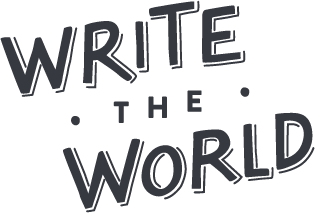The winners of our Novel Writing Competition introduced their readers to intriguing, unfamiliar...
Like other forms of fiction, short stories require you—the author—to create a world that invites readers inside and compels them to continue exploring it! A challenge of writing fiction is that what we imagine in our heads doesn’t always translate perfectly to the page. We might assume that the reader sees a landscape the way we do, or understands the interior of a character, or the roots of the problem at hand. But readers come to stories with very different backgrounds, experiences, and knowledge, and each one will see our created world differently. That’s okay – but you want to make sure you have control over what you’re revealing and specifying to the reader! Enough detail for them to see what you intend, and perhaps not so much that they can’t be imaginative on their own. Striking the perfect balance will keep readers engaged. The author’s job is to return to the drawing board again and again, asking ourselves if we’ve covered our bases.

In the sections below, you’ll find questions and ideas for each part of your story: beginning, middle, and end. Think of this checklist as a tool to reference as you add layers and depth to your narrative. Stepping back and reflecting on questions like these is another way to gain perspective on your writing.
The Beginning
- Have you started your story in the right place? Does the first paragraph hook the reader’s attention and make them want to read further?
- It’s often useful to try out an alternate opening. Skim through your draft and pluck out a few paragraphs that might serve as a compelling beginning—try them out and see how the story unfolds.
- You might also consider starting “in medias res” (literally, “in the middle of things”—so, in the action) and then back up and provide context.
- It can also be helpful to step away from your draft and make a quick list of your main characters, the time and place of your story, and what sort of situation is driving the narrative. Does it make sense to add or hint at any of these details in your opening?
The Middle
- Are you building toward something (directly or through foreshadowing/hinting)? What problem, character, conflict, or fear is driving the action of your story? Do you give the reader a sense of the stakes involved?
- Do you paint your characters vividly, allowing your reader to understand their internal and external struggles? Can the reader see your characters?
- Do you weave in details of setting so that the reader can see, hear, smell, and feel this re-imagined word?
- Do you combine scene with sections of summary? When are you showing vs. telling? Both have their time and place!
- Showing involves inviting the reader into a scene through details of place, character, dialogue, action, and imagery. Showing can make the reader feel like they are inside the story, experiencing the world alongside the main character. But showing also takes up time and space, and sometimes you need to feed your reader information quickly and efficiently.
- Think of telling as the building blocks between scenes. By summarizing details, you can compress time and provide background information and context.
The End
- Do you leave questions hanging? Is this intentional? It isn’t necessary to tie everything into a neat bow, but the reader is often looking for some sort of satisfaction at the end—a fuller or deeper understanding than when they set out on this journey on page 1.
- The author Amy Bloom once said that good endings “hang in the air like a musical note.” What feeling (or note) do you want to leave your reader with? How can this be achieved? Imagery, flashback, dialogue, moment of insight, metaphor, imagined scene…!
- There are so many wonderful ways to end a story. In addition to those listed above, here are a few more to consider: jump forward in time; revisit the beginning; signal an approaching end by shifting tone or style.
- The most important consideration, however, is whether your ending does justice to the story that’s come before. Trying out different tools and methods can help stretch your comfort zone as a writer, but make sure not to lose your wonderful voice at the expense of a literary device.
The Whole
A fun revision exercise to do once you have a complete draft is called “Scissors and Tape.” Travel back in time to before “cut and paste” was a tool:- Print out a hard copy single-sided.
- With a real pair of scissors, cut your story into pieces, so that each paragraph is on its own paper.
- Shuffle the order.
- On a big work surface (table or floor), play with the order, arranging and rearranging until you settle on a sequence.
- Carefully tape your new sequence together (you can also number each slip of paper in the new order).
- Compare to your old draft! Make final decisions about the order and then consider whether there are gaps in the story or areas that need to be altered. For example, if the paragraph toward the beginning that included key information about your character’s background got moved to the middle, then perhaps some of those details can be incorporated earlier.
Final Thoughts
Playing with the order and structure of your story—trying out different beginnings and endings, inserting a poignant scene, or swapping out a section of dialogue for a crisply summarized paragraph—is one of the most enjoyable elements of the writing process. Unbridle yourself from the structure of your first draft; give yourself permission to play; and let yourself be surprised.





